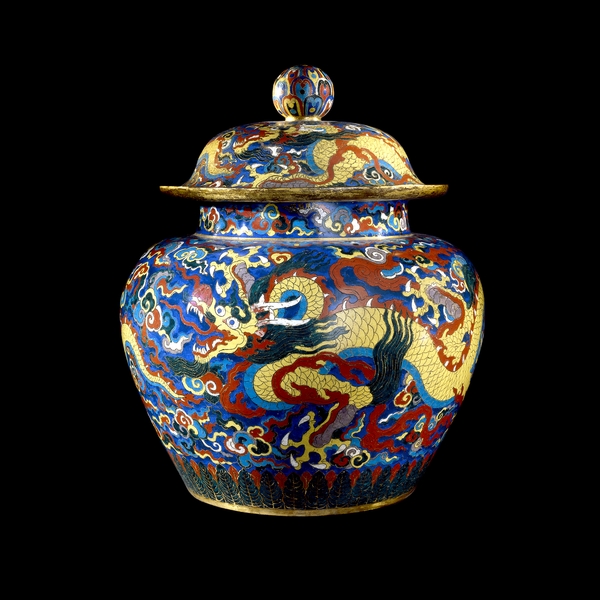Cloisonné jar, Ming Dynasty, Xuande period (AD 1426-35)
 |
|
The Cloisonné jar is housed in the British Museum.
|
The Chinese perfected the cloisonné enamel technique during the 15th century. By the time this jar was made, it was considered appropriate for imperial use, and many superb pieces were made for palaces and temples. Some of the vessel forms were borrowed from ancient Chinese bronze work. Other shapes, and some of the motifs, resemble contemporary porcelains.
This large cloisonné enamel jar has a dome cover. The body is decorated with a vigorous five-clawed dragon with open mouth, pursuing a pearl among clouds. The lid is also decorated with a similar dragon in clouds, with a finial in the shape of a lotus pod enclosed in petals. The base is surrounded by a band of lappets.
The inscription on the neck of the jar shows that it was made under the auspices of the Yuyongjian, a division of the Imperial Household. The vigorous dragon among clouds parallels the decoration on blue-and-white porcelain of the period. The six-character mark in champlevé enamel is typical of the Xuande style.
We Recommend:
